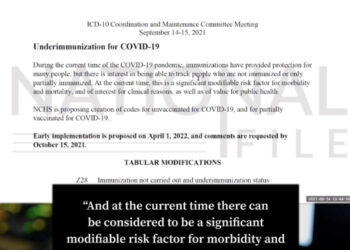Last Updated on September 21, 2022
Russian President Vladimir Putin announced Wednesday the partial mobilization of military reservists, marking a significant escalation in the Ukraine conflict. Putin and other Russian government officials have so far referred to the war as a “special military operation.” Mobilization could signal that the Kremlin is inching closer to formally declaring war on Ukraine while escalating its attacks. Some in the west have a different take, arguing that mobilization is a sign of Putin’s desperation and lack of success on Russia’s end.
In a rare address to his nation, Putin also backed plans for Russia to formally annex captured territories in Southern and Eastern Ukraine. Russian-controlled territories in Donetsk, Luhansk, Kherson and Zaporizhzhia plan on holding referendums in the coming weeks, all of which are expected to pass.
The planned referendums have been slammed as illegitimate and a violation of international law by NATO coalition countries. President Biden is expected to rally the world against the “sham” referendums during his upcoming speech at the U.N. General Assembly, where Russian Foreign Minister Sergey Lavrov will be in attendance.
Speaking at a White House press briefing, National security adviser Jake Sullivan said that the Biden Administration “unequivocally” rejects the planned motions. “We know that these referenda will be manipulated. We know that Russia will use the sham referenda as a basis to purportedly annex these territories, either now or in the future,” Sullivan said.
“Let me be clear, if this does transpire, the United States will never recognize Russia’s claims to any purportedly annexed parts of Ukraine,” he continued. “We will never recognize this territory as anything other than a part of Ukraine. We reject Russia’s actions unequivocally.”
Sullivan also addressed Russia’s mobilization plans, framing it as desperation on the part of the Russian government.
“This is reflective of Russia’s struggles in Ukraine,” Sullivan said. [Putin] may be resorting to partial mobilization, forcing even more Russians to go fight his brutal war in Ukraine, in part because they simply need more personnel and manpower given the success that Ukraine has had on the battlefield, particularly in the north east but even pushing into other parts of previously occupied territory.”
Independence referendums were held in the captured oblasts during the Ukrainian revolution in 2014. These were not recognized by the international community, however, while the bulk of rebel municipalities were recaptured by Ukraine. Separatist governments then held on to areas in Donetsk and Luhansk oblasts, where the conflict became “frozen” for eight years.
Putin formally recognized the oblasts as independent before sending troops to wider Ukraine on February 24. The Russian government has framed its military intervention as a defensive action to defend ethnic Russians in Eastern Ukraine.
When announcing partial mobilization on Wednesday, Putin threatened the use of nuclear weapons if necessary. “This is not a bluff,” the Russian leader said.
Speaking directly after him, Russian Defense Minister Sergei Shoigu said an initial 300,000 reservists would be called up. Only those with relevant combat and service experience will be mobilized, he said.
Another clause in the decree, which came into effect immediately, prevents most professional soldiers from terminating their contracts and leaving service until the partial mobilization is no longer in place, NBC News reported.
Putin has rejected calls for full military mobilization from nationalist elements until this point. It remains to be seen whether partial mobilization will satisfy these factions or help Russia achieve its goals.
The Russian government has claimed its “special military operation” is going to plan. NATO governments believe Russia is faltering, however, pointing to recent Ukrainian gains in Kharkiv Oblast.




















